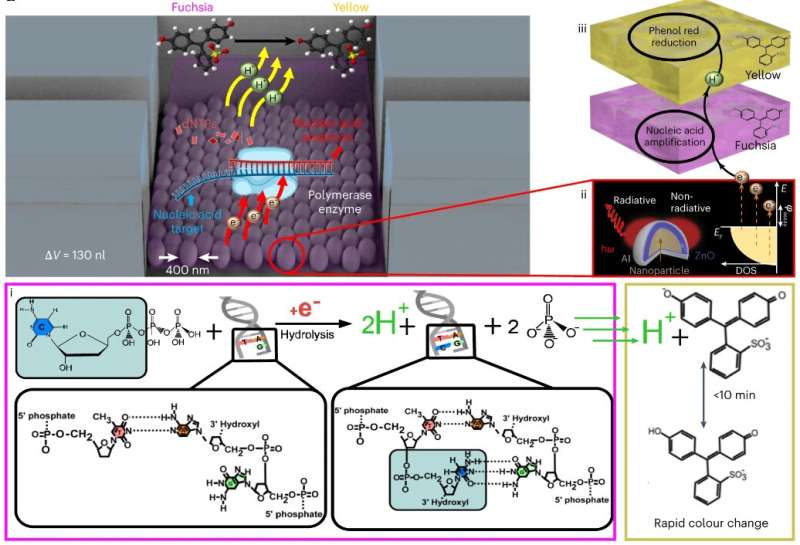This article has been reviewed according to Science X's editorial process and policies. Editors have highlighted the following attributes while ensuring the content's credibility:
fact-checked
trusted source
proofread
New diagnostic platform uses nanotechnology and machine learning to identify infectious diseases quickly

Infectious diseases and respiratory infections in particular are a leading cause of global mortality. As such, there is an urgent need for rapid, large-scale diagnostic tools that can detect these diseases early, something which doesn't currently exist. To address these problems, McGill University Professor of Bioengineering Sara Mahshid's lab has developed an all-in-one detection platform (QolorEX) that can deliver test results in just 13 minutes.
For use in locations where people congregate, such as hospitals, schools, and airports, the tests are conducted by taking a saliva sample (no swabs needed) and transferring it to a microfluid device which then uses machine learning to automatically take microscopic images of the sample. Those images are sent to a cellphone application that decodes the data into a test result.
"Because we will likely see more pandemics in the future, our lab aims to build portable, low-cost technologies with practical clinical results for use in low-resource settings, at-home, or communal environments," says Mahshid and her students, Ph.D. candidates Tamer Abdel Fatah and Mahsa Jalali, co-authors of the paper recently published in Nature Nanotechnology
"This platform shown to have a 95% accuracy rate, on par with quantitative PCR when it comes to COVID testing using saliva samples is potentially a valuable tool for monitoring emerging viral infections, and variants, and even bacteria. Thanks to its accessibility, the number of tests being performed can be increased, potentially leading to an early diagnosis that could save lives and curb the spread of respiratory diseases globally," adds Mahshid, who is also Canada Research Chair in Nano-Biosensing Devices.
More information: Tamer AbdElFatah et al, Nanoplasmonic amplification in microfluidics enables accelerated colorimetric quantification of nucleic acid biomarkers from pathogens, Nature Nanotechnology (2023). DOI: 10.1038/s41565-023-01384-5
Nanoplasmonic acceleration of nucleic acid amplification for pathogen detection, Nature Nanotechnology (2023). DOI: 10.1038/s41565-023-01398-z , doi.org/10.1038/s41565-023-01398-z
Provided by McGill University




















